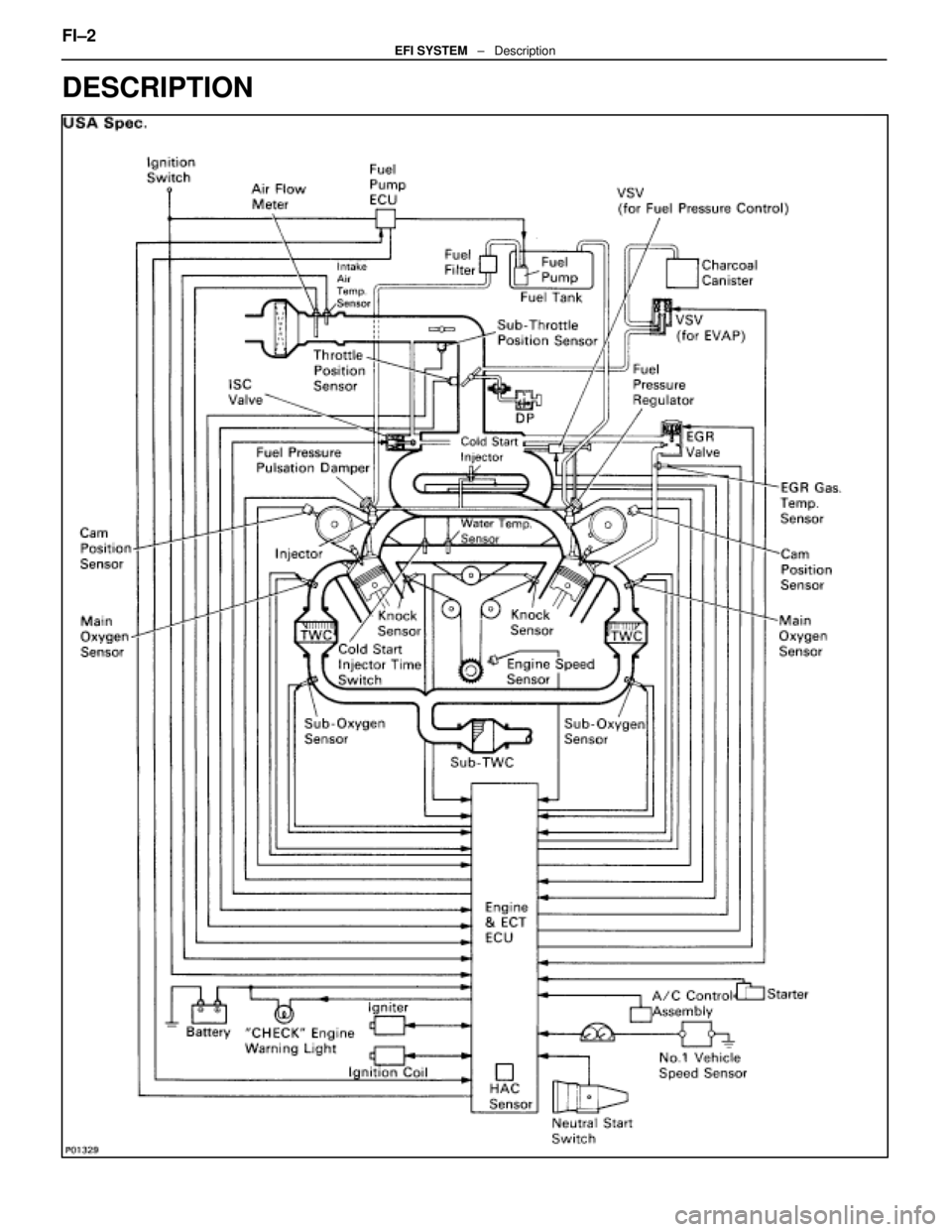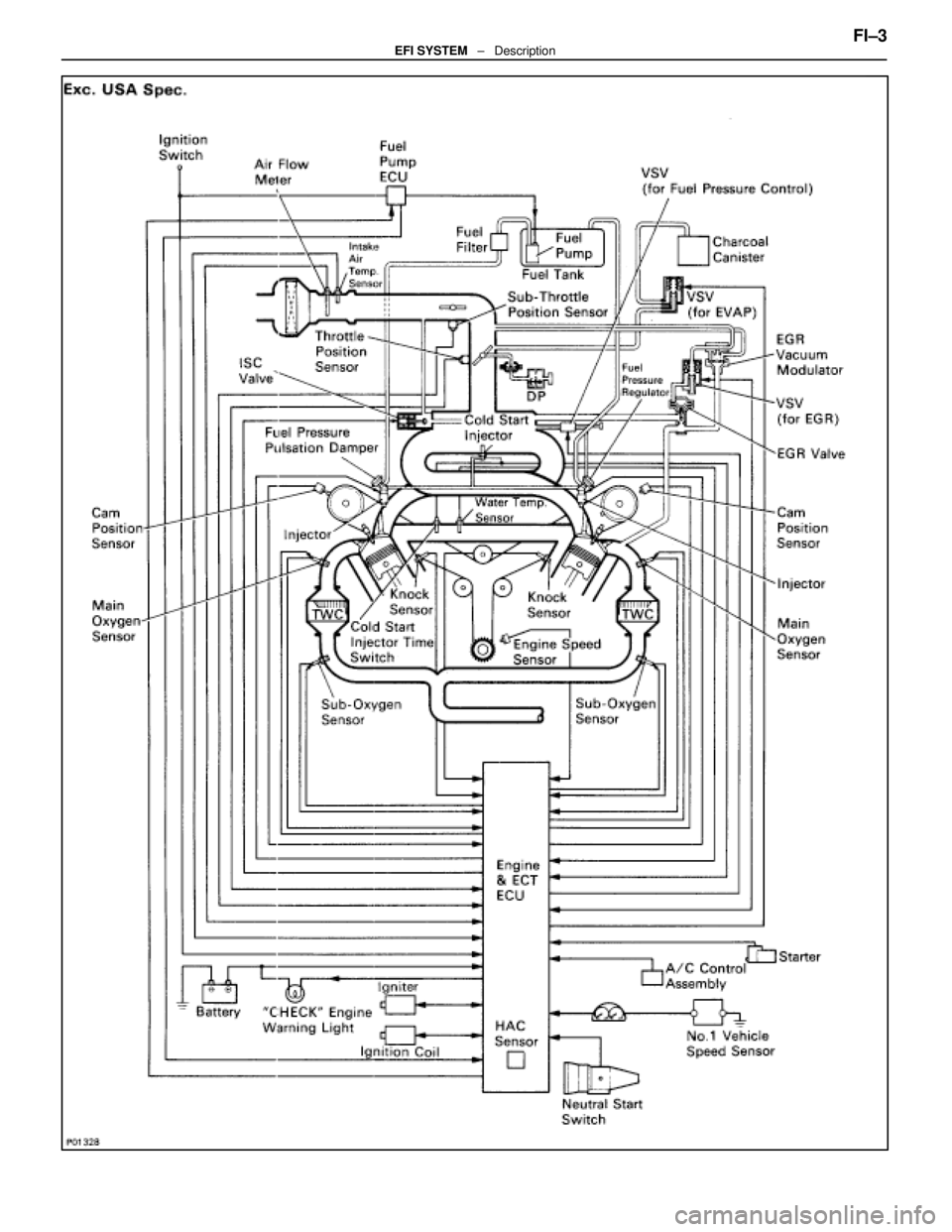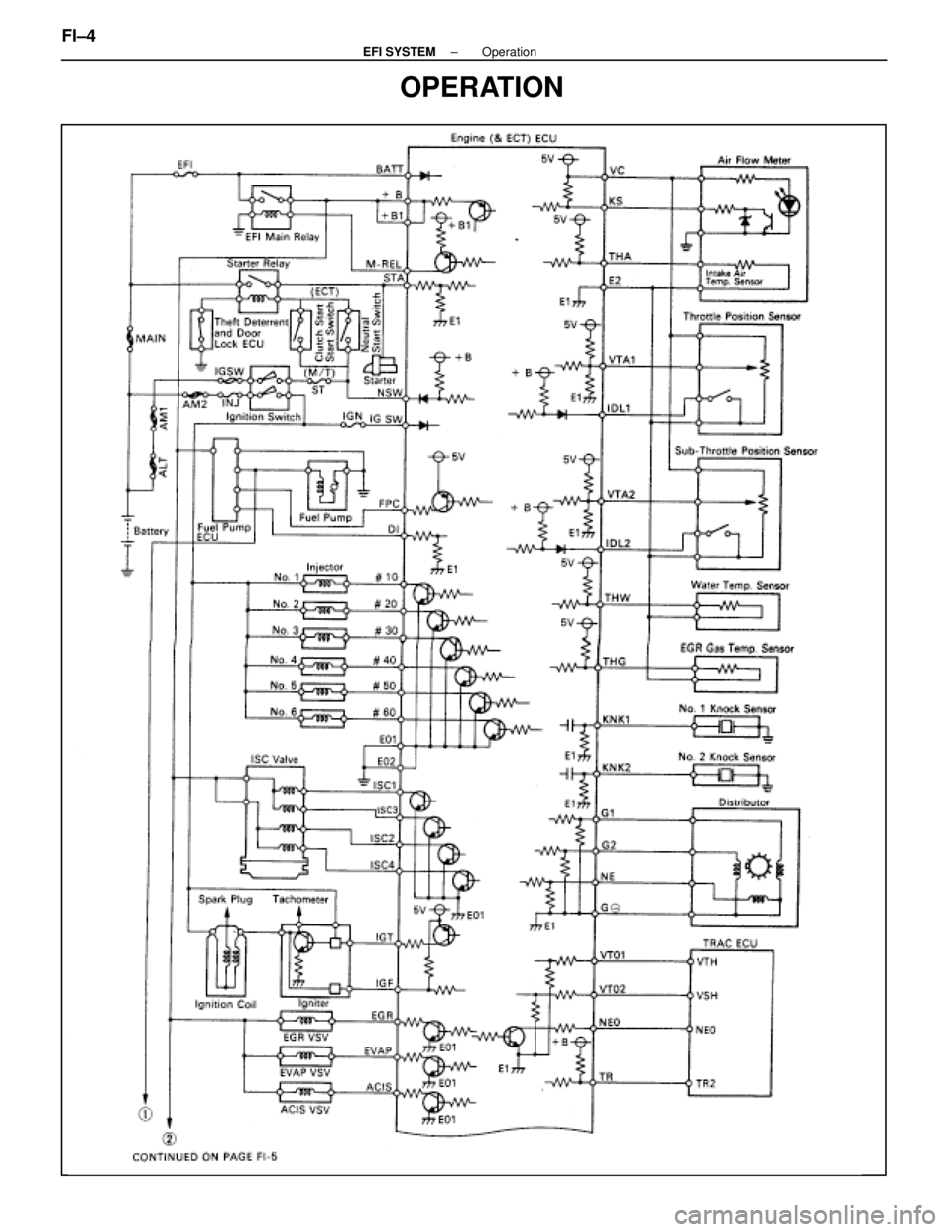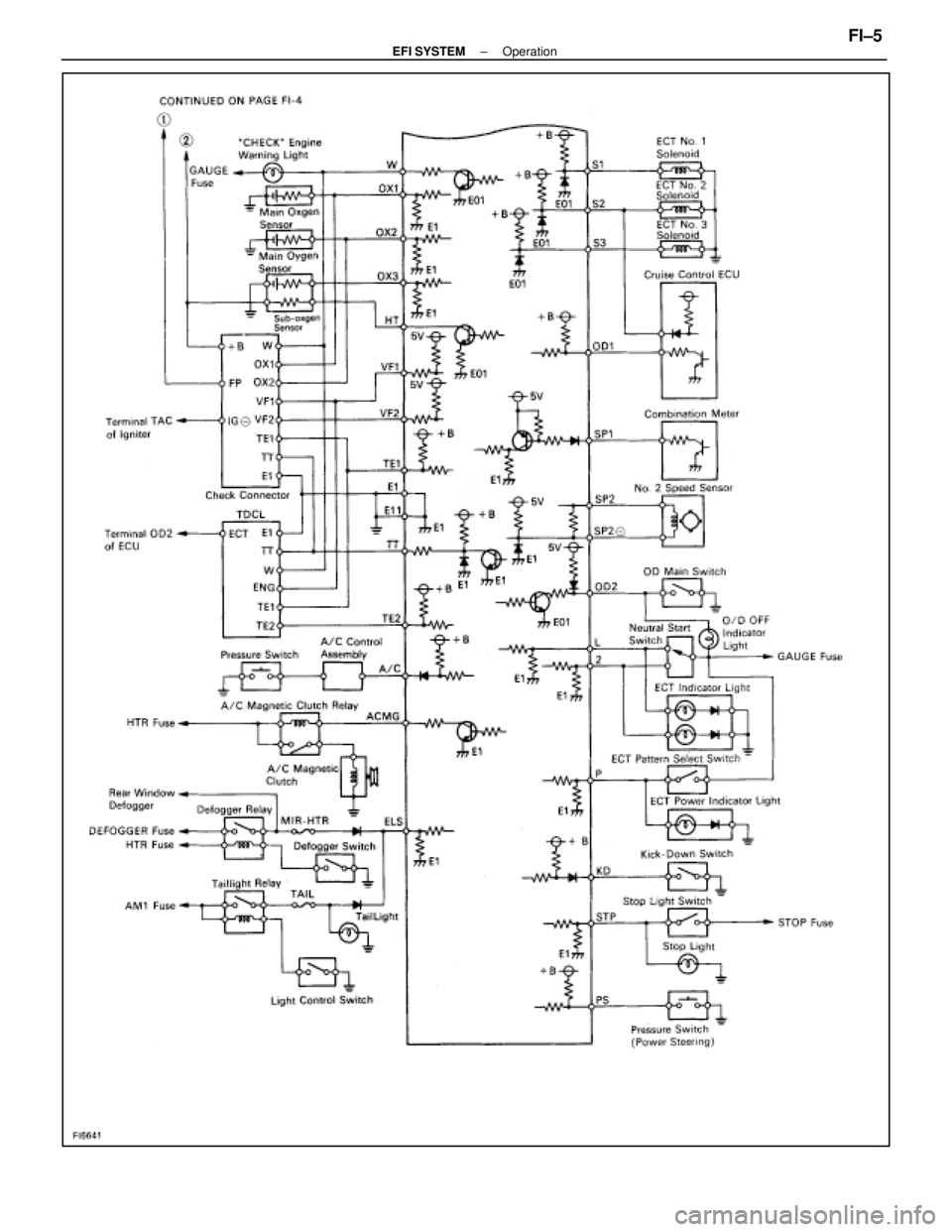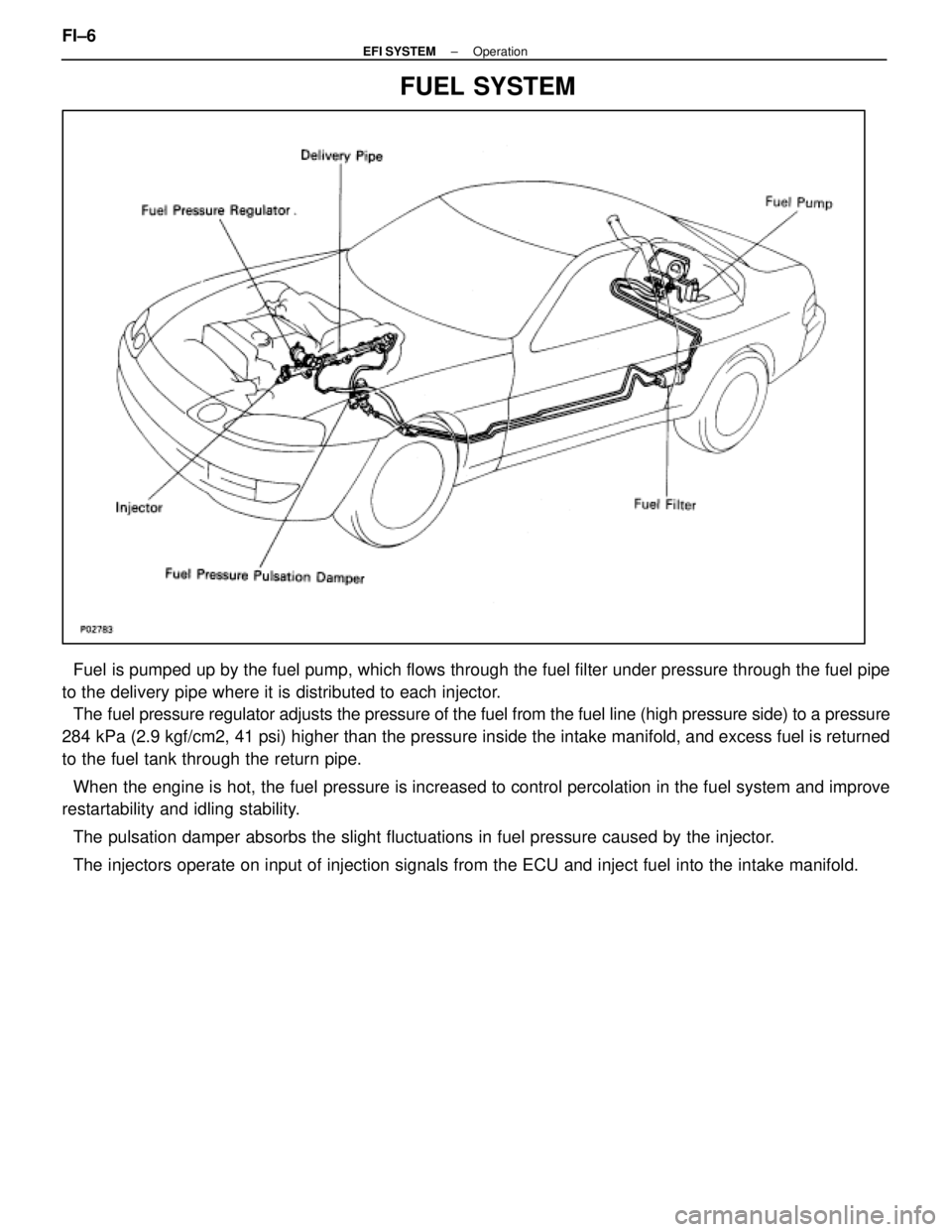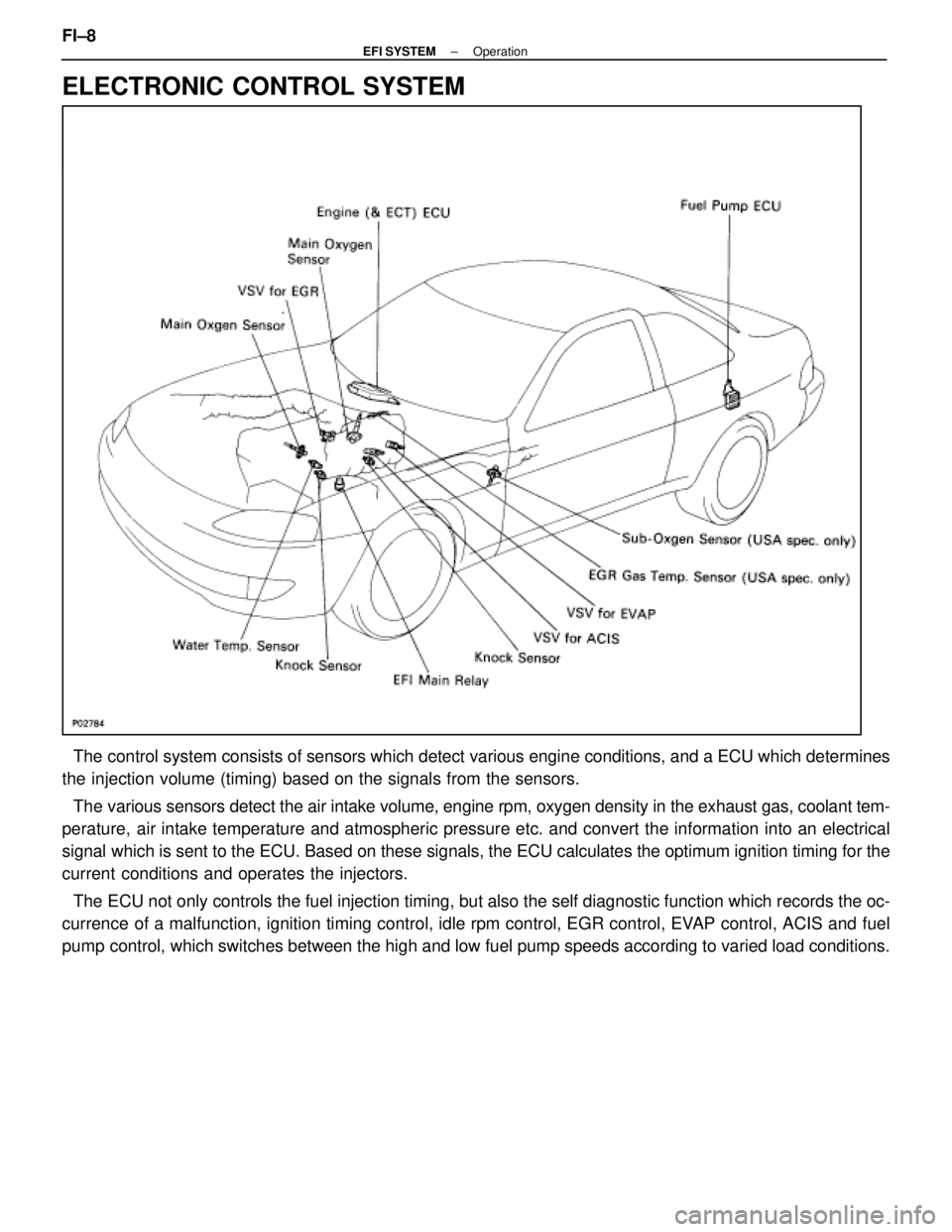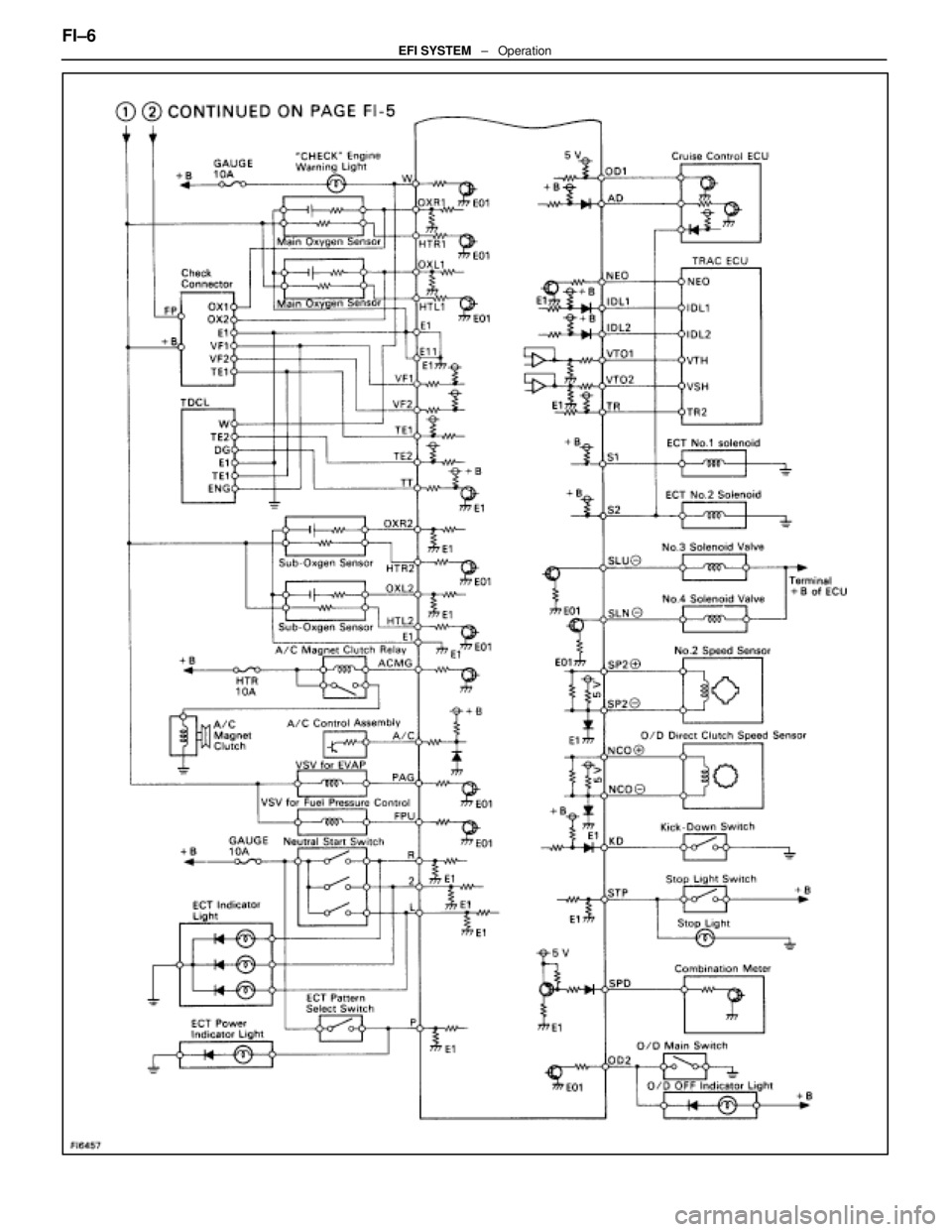LEXUS SC400 1991 Service Repair Manual
Manufacturer: LEXUS, Model Year: 1991,
Model line: SC400,
Model: LEXUS SC400 1991
Pages: 4087, PDF Size: 75.75 MB
LEXUS SC400 1991 Service Repair Manual
SC400 1991
LEXUS
LEXUS
https://www.carmanualsonline.info/img/36/57051/w960_57051-0.png
LEXUS SC400 1991 Service Repair Manual
Trending: fuses, fuel consumption, ignition, jacking, brake sensor, battery replacement, headlights
Page 2001 of 4087
DESCRIPTION
FI±2EFI SYSTEM ± Description
WhereEverybodyKnowsYourName
Page 2002 of 4087
FI±3EFI SYSTEM ± Description
WhereEverybodyKnowsYourName
Page 2003 of 4087

The EFI system is composed of three basic sub±systems: Fuel, Air Induction and Elect\
ronic Control
Systems.
FUEL SYSTEM
An electric pump fuel pressure supplies sufficient fuel, under a constant pressure, to the EFI injectors. In
accordance with signals from the ECU (Electronic Control Unit), these \
injectors inject the quantity of fuel most
appropriate for the engine condition into the intake manifold.
AIR INDUCTION SYSTEM
The air induction system provides sufficient air for engine operation.
ELECTRONIC CONTROL SYSTEM
The 1UZ±FE engine (ECU±formerly EFI computer) with a microcomputer \
centrally controls the EFI, ESA,
ISC and Diagnosis system, etc. The ECU controls the following functions:
1. Electronic Fuel Injection (EFI)
The ECU receives signals from various sensors indicating changing engine op\
eration conditions such as:Intake air volume
Intake air temperature
Coolant temperature
Engine rpm
Acceleration/deceleration
Exhaust oxygen content etc.
The signals are utilized by the ECU to determine the injection duration nec\
essary for an optimum air±fuel
ratio.
2. Electronic Spark Advance (ESA) The ECU is programmed with data for optimum ignition timing under any and all opera\
ting conditions. Using
data provided by sensors which monitor various engine functions (rpm, coola\
nt temperature, etc.), the
Electronic Control Unit (ECU) triggers the spark at precisely right instant. (S\
ee IG section)
3. Idle Speed Control (ISC) The ECU is programmed with idle speed data for various engine conditions (\
coolant temperature, air condi-
tioner ON/OFF, etc.).
The air volume flowing through the throttle valve by±pass passage is adj\
usted according to the signal from
each sensor and the idle speed is kept at the set value.
4. Diagnosis Function When the ECU detects any malfunctions or abnormalities in the sensor network\
, it lights the ºCHECKº en-
gine warning light in the combination meter. At the same time, the trouble is identified and a diagnostic code
is recorded by the ECU. The diagnostic code can be read by the number of\
blinks of the ºCHECKº engine
warning light when terminals TE1 and E1 are connected. The diagnostic co\
des are refer to the later page.
(See TR section)
5. Self±Correction Function If any sensor malfunctions, an average value recorded in the back±up ci\
rcuit is substituted to make driving
possible.
If danger is predicted, the engine is stopped and the ºCHECKº engine\
warning light will light up.
6. Fail±Safe Function Even if an abnormality occurs in the ECU, the back±up circuit uses a specifie\
d fuel injection and ignition
timing to provide vehicle driveability, and also lightsup the ºCHECKº engine warning light.
FI±4
EFI SYSTEM
± Description
WhereEverybodyKnowsYourName
Page 2004 of 4087
OPERATION
FI±4±
EFI SYSTEM Operation
WhereEverybodyKnowsYourName
Page 2005 of 4087
±
EFI SYSTEM OperationFI±5
WhereEverybodyKnowsYourName
Page 2006 of 4087
FUEL SYSTEM
Fuel is pumped up by the fuel pump, which flows through the fuel filter unde\
r pressure through the fuel pipe
to the delivery pipe where it is distributed to each injector. The fuel pressure regulator adjusts the pressure of the fuel from the fuel \
line (high pressure side) to a pressure
284 kPa (2.9 kgf/cm2, 41 psi) higher than the pressure inside the intake \
manifold, and excess fuel is returned
to the fuel tank through the return pipe.
When the engine is hot, the fuel pressure is increased to control percolation in the fuel system and impr\
ove
restartability and idling stability.
The pulsation damper absorbs the slight fluctuations in fuel pressure ca\
used by the injector.
The injectors operate on input of injection signals from the ECU and inj\
ect fuel into the intake manifold.
FI±6
±
EFI SYSTEM Operation
WhereEverybodyKnowsYourName
Page 2007 of 4087
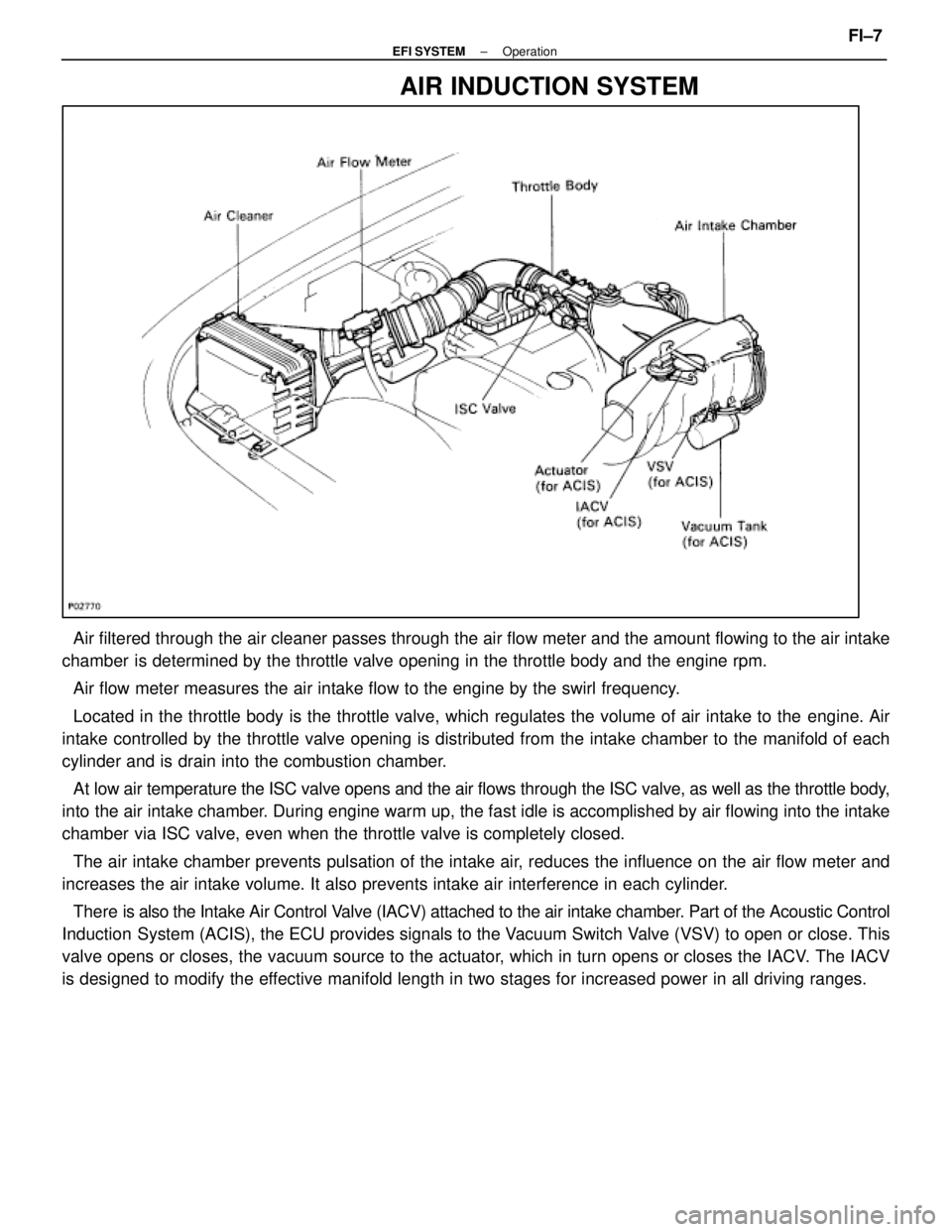
AIR INDUCTION SYSTEM
Air filtered through the air cleaner passes through the air flow meter a\
nd the amount flowing to the air intake
chamber is determined by the throttle valve opening in the throttle body and th\
e engine rpm.
Air flow meter measures the air intake flow to the engine by the swirl f\
requency.
Located in the throttle body is the throttle valve, which regulates the \
volume of air intake to the engine. Air
intake controlled by the throttle valve opening is distributed from the \
intake chamber to the manifold of each
cylinder and is drain into the combustion chamber.
At low air temperature the ISC valve opens and the air flows through the I\
SC valve, as well as the throttle body,
into the air intake chamber. During engine warm up, the fast idle is accomplished by air flowing into the intake
chamber via ISC valve, even when the throttle valve is completely closed.
The air intake chamber prevents pulsation of the intake air, reduces the influence on the air flow meter and
increases the air intake volume. It also prevents intake air interferenc\
e in each cylinder.
There is also the Int ake Air Control Valve (IACV) attached to the air intake chamber. Part of the Acoustic Control
Induction System (ACIS), the ECU provides signals to the Vacuum Switch Valve (VSV) to open or close. This
valve opens or closes, the vacuum source to the actuator, which in turn opens or closes the IACV. The IACV
is designed to modify the effective manifold length in two stages for increased power in all driving\
ranges.
±
EFI SYSTEM OperationFI±7
WhereEverybodyKnowsYourName
Page 2008 of 4087
ELECTRONIC CONTROL SYSTEM
The control system consists of sensors which detect various engine conditio\
ns, and a ECU which determines
the injection volume (timing) based on the signals from the sensors.
The various sensors detect the air intake volume, engine rpm, oxygen densit\
y in the exhaust gas, coolant tem-
perature, air intake temperature and atmospheric pressure etc. and convert the inf\
ormation into an electrical
signal which is sent to the ECU. Based on these signals, the ECU calculates th\
e optimum ignition timing for the
current conditions and operates the injectors.
The ECU not only controls the fuel injection timing, but also the self diag\
nostic function which records the oc-
currence of a malfunction, ignition timing control, idle rpm control, EGR contro\
l, EVAP control, ACIS and fuel
pump control, which switches between the high and low fuel pump speeds accor\
ding to varied load conditions. FI±8
±
EFI SYSTEM Operation
WhereEverybodyKnowsYourName
Page 2009 of 4087
OPERATION
FI±5 ± OperationEFI SYSTEM
WhereEverybodyKnowsYourName
Page 2010 of 4087
FI±6EFI SYSTEM ± Operation
WhereEverybodyKnowsYourName
Trending: refrigerant type, trunk release, EFI, airbag, window, run flat, horn
